-
EXECUTIVE SUMMARY
-
MARKET INTRODUCTION
-
Definition
-
Scope of the Study
- Research Objective
- Assumptions
- Limitations
-
RESEARCH METHODOLOGY
-
Overview
-
Data Mining
-
Secondary Research
-
Primary Research
- Primary Interviews
- Breakdown of Primary Respondents
-
and Information Gathering Process
-
Forecasting Model
-
Market Size Estimation
- Bottom-Up Approach
- Top-Down Approach
-
Data Triangulation
-
Validation
-
MARKET DYNAMICS
-
Overview
-
Drivers
-
Restraints
-
Opportunities
-
MARKET FACTOR ANALYSIS
-
Value Chain Analysis
-
Porter’s Five Forces Analysis
- Bargaining Power
- Threat of New Entrants
- Threat of Substitutes
- Intensity of Rivalry
-
of Suppliers
-
5.2.2.
-
Bargaining Power of Buyers
-
COVID-19 Impact Analysis
- Market Impact Analysis
- Regional Impact
- Opportunity and
-
Threat Analysis
-
6.
-
GLOBAL COLOUR COSMETICS MARKET, BY TARGET MARKET
-
Overview
-
Prestige Products
-
Mass Products
-
GLOBAL COLOUR COSMETICS MARKET, BY DISTRIBUTION
-
CHANNEL
-
7.1.
-
Overview
-
7.2.
-
Offline
-
7.3.
-
Online
-
GLOBAL
-
COLOUR COSMETICS MARKET, BY APPLICATION
-
Overview
-
Nail Products
-
Hair Products
-
Lip Products
-
Face Products
-
Others
-
GLOBAL COLOUR COSMETICS MARKET, BY REGION
-
Overview
-
North America
- US
- Canada
-
Europe
- Germany
- France
- UK
- Italy
- Spain
- Rest of Europe
-
Asia-Pacific
- China
- India
- Japan
- South Korea
- Australia
- Rest of Asia-Pacific
-
Rest of the World
- Middle East
- Africa
- Latin America
-
COMPETITIVE LANDSCAPE
-
Overview
-
Competitive Analysis
-
Market Share Analysis
-
Major Growth Strategy in the Global Colour
-
Cosmetics Market,
-
10.5.
-
Competitive Benchmarking
-
Leading Players in Terms of Number of Developments in the Global
-
Colour Cosmetics Market,
-
Key developments and Growth Strategies
- New Product Launch/Service Deployment
- Merger &
- Sales & Operating Income, 2022
- Major Players R&D Expenditure. 2022
-
Acquisitions
-
10.7.3.
-
Joint Ventures
-
10.8.
-
Major Players Financial Matrix
-
COMPANY PROFILES
-
L''Oréal
- Company Overview
- Financial Overview
- Products Offered
- Key Developments
- SWOT Analysis
- Key Strategies
-
S.A (France)
-
11.1.1.
-
Company Overview
-
11.1.2.
-
Financial Overview
-
11.1.3.
-
Products Offered
-
11.1.4.
-
Key Developments
-
11.1.5.
-
SWOT Analysis
-
11.1.6.
-
Key Strategies
-
11.2.
-
Unilever (U.K.)
-
11.2.1.
-
Company Overview
-
11.2.2.
-
Financial Overview
-
11.2.3.
-
Products Offered
-
11.2.4.
-
Key Developments
-
11.2.5.
-
SWOT Analysis
-
11.2.6.
-
Key Strategies
-
11.3.
-
Avon Products Inc. (U.K.)
-
Estée Lauder Inc (U.S.)
- Company Overview
- Financial Overview
- Products Offered
- Key Developments
- SWOT Analysis
- Key Strategies
-
Shiseido Company,
-
Limited (Japan)
-
11.5.1.
-
Company Overview
-
11.5.2.
-
Financial Overview
-
11.5.3.
-
Products Offered
-
11.5.4.
-
Key Developments
-
11.5.5.
-
SWOT Analysis
-
11.5.6.
-
Key Strategies
-
11.6.
-
Revlon, Inc. (U.S.)
-
11.6.1.
-
Company Overview
-
11.6.2.
-
Financial Overview
-
11.6.3.
-
Products Offered
-
11.6.4.
-
Key Developments
-
11.6.5.
-
SWOT Analysis
-
11.6.6.
-
Key Strategies
-
11.7.
-
Coty Inc. (U.S.)
-
11.7.1.
-
Company Overview
-
11.7.2.
-
Financial Overview
-
11.7.3.
-
Products Offered
-
11.7.4.
-
Key Developments
-
11.7.5.
-
SWOT Analysis
-
11.7.6.
-
Key Strategies
-
11.8.
-
Amway (U.S.)
-
11.8.1.
-
Company Overview
-
11.8.2.
-
Financial Overview
-
11.8.3.
-
Products Offered
-
11.8.4.
-
Key Developments
-
11.8.5.
-
SWOT Analysis
-
11.8.6.
-
Key Strategies
-
11.9.
-
KRYOLAN (Germany)
-
11.9.1.
-
Company Overview
-
11.9.2.
-
Financial Overview
-
11.9.3.
-
Products Offered
-
11.9.4.
-
Key Developments
-
11.9.5.
-
SWOT Analysis
-
11.9.6.
-
Key Strategies
-
11.10.
-
CIATÉ (U.K.)
-
11.10.1.
-
Company Overview
-
11.10.2.
-
Financial Overview
-
11.10.3.
-
Products Offered
-
11.10.4.
-
Key Developments
-
11.10.5.
-
SWOT Analysis
-
11.10.6.
-
Key Strategies
-
11.11.
-
CHANEL (France)
-
11.11.1.
-
Company Overview
-
11.11.2.
-
Financial Overview
-
11.11.3.
-
Products Offered
-
11.11.4.
-
Key Developments
-
11.11.5.
-
SWOT Analysis
-
11.11.6.
-
Key Strategies
-
12.
-
APPENDIX
-
12.1.
-
References
-
12.2.
-
Related Reports
-
-
LIST OF TABLES
-
GLOBAL COLOUR
-
COSMETICS MARKET, SYNOPSIS, 2025 - 2034
-
GLOBAL COLOUR COSMETICS MARKET, ESTIMATES &
-
FORECAST, 2025 - 2034 (USD BILLION)
-
GLOBAL COLOUR COSMETICS MARKET, BY TARGET MARKET,
-
GLOBAL COLOUR COSMETICS MARKET, BY DISTRIBUTION CHANNEL, 2025
-
- 2034 (USD BILLION)
-
TABLE
-
GLOBAL COLOUR COSMETICS MARKET, BY APPLICATION, 2025 - 2034 (USD BILLION)
-
NORTH AMERICA:
-
COLOUR COSMETICS MARKET, BY TARGET MARKET, 2025 - 2034 (USD BILLION)
-
NORTH AMERICA:
-
COLOUR COSMETICS MARKET, BY DISTRIBUTION CHANNEL, 2025 - 2034 (USD BILLION)
-
NORTH AMERICA:
-
COLOUR COSMETICS MARKET, BY APPLICATION, 2025 - 2034 (USD BILLION)
-
US: COLOUR COSMETICS
-
MARKET, BY TARGET MARKET, 2025 - 2034 (USD BILLION)
-
US: COLOUR COSMETICS MARKET, BY DISTRIBUTION
-
CHANNEL, 2025 - 2034 (USD BILLION)
-
US: COLOUR COSMETICS MARKET, BY APPLICATION, 2025
-
- 2034 (USD BILLION)
-
TABLE
-
CANADA: COLOUR COSMETICS MARKET, BY TARGET MARKET, 2025 - 2034 (USD BILLION)
-
CANADA: COLOUR
-
COSMETICS MARKET, BY DISTRIBUTION CHANNEL, 2025 - 2034 (USD BILLION)
-
CANADA: COLOUR COSMETICS
-
MARKET, BY APPLICATION, 2025 - 2034 (USD BILLION)
-
EUROPE: COLOUR COSMETICS MARKET, BY TARGET
-
MARKET, 2025 - 2034 (USD BILLION)
-
EUROPE: COLOUR COSMETICS MARKET, BY DISTRIBUTION CHANNEL, 2025
-
- 2034 (USD BILLION)
-
TABLE
-
EUROPE: COLOUR COSMETICS MARKET, BY APPLICATION, 2025 - 2034 (USD BILLION)
-
GERMANY: COLOUR
-
COSMETICS MARKET, BY TARGET MARKET, 2025 - 2034 (USD BILLION)
-
GERMANY: COLOUR COSMETICS
-
MARKET, BY DISTRIBUTION CHANNEL, 2025 - 2034 (USD BILLION)
-
GERMANY: COLOUR COSMETICS MARKET, BY APPLICATION,
-
FRANCE: COLOUR COSMETICS MARKET, BY TARGET MARKET, 2025 - 2034
-
(USD BILLION)
-
TABLE
-
FRANCE: COLOUR COSMETICS MARKET, BY DISTRIBUTION CHANNEL, 2025 - 2034 (USD BILLION)
-
FRANCE: COLOUR
-
COSMETICS MARKET, BY APPLICATION, 2025 - 2034 (USD BILLION)
-
ITALY: COLOUR COSMETICS MARKET, BY TARGET
-
MARKET, 2025 - 2034 (USD BILLION)
-
ITALY: COLOUR COSMETICS MARKET, BY DISTRIBUTION CHANNEL, 2025
-
- 2034 (USD BILLION)
-
TABLE
-
ITALY: COLOUR COSMETICS MARKET, BY APPLICATION, 2025 - 2034 (USD BILLION)
-
SPAIN: COLOUR
-
COSMETICS MARKET, BY TARGET MARKET, 2025 - 2034 (USD BILLION)
-
SPAIN: COLOUR COSMETICS
-
MARKET, BY DISTRIBUTION CHANNEL, 2025 - 2034 (USD BILLION)
-
SPAIN: COLOUR COSMETICS MARKET, BY APPLICATION,
-
UK: COLOUR COSMETICS MARKET, BY TARGET MARKET, 2025 - 2034
-
(USD BILLION)
-
TABLE
-
UK: COLOUR COSMETICS MARKET, BY DISTRIBUTION CHANNEL, 2025 - 2034 (USD BILLION)
-
UK: COLOUR COSMETICS
-
MARKET, BY APPLICATION, 2025 - 2034 (USD BILLION)
-
REST OF EUROPE: COLOUR COSMETICS MARKET,
-
BY TARGET MARKET, 2025 - 2034 (USD BILLION)
-
REST OF EUROPE: COLOUR COSMETICS MARKET,
-
BY DISTRIBUTION CHANNEL, 2025 - 2034 (USD BILLION)
-
REST OF EUROPE: COLOUR COSMETICS MARKET,
-
BY APPLICATION, 2025 - 2034 (USD BILLION)
-
ASIA-PACIFIC: COLOUR COSMETICS MARKET, BY
-
TARGET MARKET, 2025 - 2034 (USD BILLION)
-
ASIA-PACIFIC: COLOUR COSMETICS MARKET, BY
-
DISTRIBUTION CHANNEL, 2025 - 2034 (USD BILLION)
-
ASIA-PACIFIC: COLOUR COSMETICS MARKET, BY
-
APPLICATION, 2025 - 2034 (USD BILLION)
-
JAPAN: COLOUR COSMETICS MARKET, BY TARGET MARKET,
-
JAPAN: COLOUR COSMETICS MARKET, BY DISTRIBUTION CHANNEL, 2025
-
- 2034 (USD BILLION)
-
TABLE
-
JAPAN: COLOUR COSMETICS MARKET, BY APPLICATION, 2025 - 2034 (USD BILLION)
-
CHINA: COLOUR
-
COSMETICS MARKET, BY TARGET MARKET, 2025 - 2034 (USD BILLION)
-
CHINA: COLOUR COSMETICS
-
MARKET, BY DISTRIBUTION CHANNEL, 2025 - 2034 (USD BILLION)
-
CHINA: COLOUR COSMETICS MARKET, BY APPLICATION,
-
INDIA: COLOUR COSMETICS MARKET, BY TARGET MARKET, 2025 - 2034
-
(USD BILLION)
-
TABLE
-
INDIA: COLOUR COSMETICS MARKET, BY DISTRIBUTION CHANNEL, 2025 - 2034 (USD BILLION)
-
INDIA:
-
COLOUR COSMETICS MARKET, BY APPLICATION, 2025 - 2034 (USD BILLION)
-
AUSTRALIA: COLOUR COSMETICS
-
MARKET, BY TARGET MARKET, 2025 - 2034 (USD BILLION)
-
AUSTRALIA: COLOUR COSMETICS MARKET, BY DISTRIBUTION
-
CHANNEL, 2025 - 2034 (USD BILLION)
-
AUSTRALIA: COLOUR COSMETICS MARKET, BY APPLICATION,
-
SOUTH KOREA: COLOUR COSMETICS MARKET, BY TARGET MARKET, 2025
-
- 2034 (USD BILLION)
-
TABLE
-
SOUTH KOREA: COLOUR COSMETICS MARKET, BY DISTRIBUTION CHANNEL, 2025 - 2034 (USD
-
BILLION)
-
TABLE
-
SOUTH KOREA: COLOUR COSMETICS MARKET, BY APPLICATION, 2025 - 2034 (USD BILLION)
-
REST OF ASIA-PACIFIC:
-
COLOUR COSMETICS MARKET, BY TARGET MARKET, 2025 - 2034 (USD BILLION)
-
REST OF ASIA-PACIFIC:
-
COLOUR COSMETICS MARKET, BY DISTRIBUTION CHANNEL, 2025 - 2034 (USD BILLION)
-
REST OF ASIA-PACIFIC:
-
COLOUR COSMETICS MARKET, BY APPLICATION, 2025 - 2034 (USD BILLION)
-
REST OF THE WORLD: COLOUR
-
COSMETICS MARKET, BY TARGET MARKET, 2025 - 2034 (USD BILLION)
-
REST OF THE WORLD: COLOUR
-
COSMETICS MARKET, BY DISTRIBUTION CHANNEL, 2025 - 2034 (USD BILLION)
-
REST OF THE WORLD: COLOUR
-
COSMETICS MARKET, BY APPLICATION, 2025 - 2034 (USD BILLION)
-
MIDDLE EAST: COLOUR COSMETICS MARKET, BY
-
TARGET MARKET, 2025 - 2034 (USD BILLION)
-
MIDDLE EAST: COLOUR COSMETICS MARKET, BY DISTRIBUTION
-
CHANNEL, 2025 - 2034 (USD BILLION)
-
MIDDLE EAST: COLOUR COSMETICS MARKET, BY APPLICATION,
-
AFRICA: COLOUR COSMETICS MARKET, BY TARGET MARKET, 2025 -
-
TABLE
-
AFRICA: COLOUR COSMETICS MARKET, BY DISTRIBUTION CHANNEL, 2025 - 2034 (USD BILLION)
-
AFRICA: COLOUR
-
COSMETICS MARKET, BY APPLICATION, 2025 - 2034 (USD BILLION)
-
LATIN AMERICA: COLOUR COSMETICS MARKET,
-
BY TARGET MARKET, 2025 - 2034 (USD BILLION)
-
LATIN AMERICA: COLOUR COSMETICS MARKET,
-
BY DISTRIBUTION CHANNEL, 2025 - 2034 (USD BILLION)
-
LATIN AMERICA: COLOUR COSMETICS MARKET,
-
BY APPLICATION, 2025 - 2034 (USD BILLION)
-
LIST OF FIGURES
-
RESEARCH PROCESS
-
MARKET STRUCTURE FOR THE GLOBAL COLOUR COSMETICS
-
MARKET
-
FIGURE
-
MARKET DYNAMICS FOR THE GLOBAL COLOUR COSMETICS MARKET
-
GLOBAL COLOUR COSMETICS MARKET, SHARE (%),
-
BY TARGET MARKET, 2022
-
GLOBAL COLOUR COSMETICS MARKET, SHARE (%), BY DISTRIBUTION
-
CHANNEL, 2022
-
FIGURE
-
GLOBAL COLOUR COSMETICS MARKET, SHARE (%), BY APPLICATION, 2022
-
GLOBAL COLOUR COSMETICS
-
MARKET, SHARE (%), BY REGION, 2022
-
NORTH AMERICA: COLOUR COSMETICS MARKET, SHARE (%),
-
BY REGION, 2022
-
FIGURE
-
EUROPE: COLOUR COSMETICS MARKET, SHARE (%), BY REGION, 2022
-
ASIA-PACIFIC: COLOUR
-
COSMETICS MARKET, SHARE (%), BY REGION, 2022
-
REST OF THE WORLD: COLOUR COSMETICS MARKET,
-
SHARE (%), BY REGION, 2022
-
GLOBAL COLOUR COSMETICS MARKET: COMPANY SHARE ANALYSIS, 2022
-
(%)
-
FIGURE
-
L''ORÉAL S.A (FRANCE): FINANCIAL OVERVIEW SNAPSHOT
-
L''ORÉAL S.A (FRANCE): SWOT ANALYSIS
-
FIGURE 15
-
UNILEVER (U.K.): FINANCIAL OVERVIEW SNAPSHOT
-
UNILEVER (U.K.): SWOT ANALYSIS
-
AVON PRODUCTS
-
INC. (U.K.): FINANCIAL OVERVIEW SNAPSHOT
-
AVON PRODUCTS INC. (U.K.): SWOT ANALYSIS
-
ESTÉE
-
LAUDER INC (U.S.): FINANCIAL OVERVIEW SNAPSHOT
-
ESTÉE LAUDER INC (U.S.): SWOT ANALYSIS
-
SHISEIDO COMPANY,
-
LIMITED (JAPAN).: FINANCIAL OVERVIEW SNAPSHOT
-
SHISEIDO COMPANY, LIMITED (JAPAN).: SWOT
-
ANALYSIS
-
FIGURE
-
REVLON, INC. (U.S.): FINANCIAL OVERVIEW SNAPSHOT
-
REVLON, INC. (U.S.): SWOT ANALYSIS
-
COTY INC. (U.S.):
-
FINANCIAL OVERVIEW SNAPSHOT
-
COTY INC. (U.S.): SWOT ANALYSIS
-
AMWAY (U.S.): FINANCIAL OVERVIEW SNAPSHOT
-
AMWAY (U.S.):
-
SWOT ANALYSIS
-
FIGURE
-
KRYOLAN (GERMANY): FINANCIAL OVERVIEW SNAPSHOT
-
KRYOLAN (GERMANY): SWOT ANALYSIS
-
CIATÉ
-
(U.K.): FINANCIAL OVERVIEW SNAPSHOT
-
CIATÉ (U.K.): SWOT ANALYSIS
-
CHANEL (FRANCE):
-
FINANCIAL OVERVIEW SNAPSHOT
-
CHANEL (FRANCE): SWOT ANALYSIS

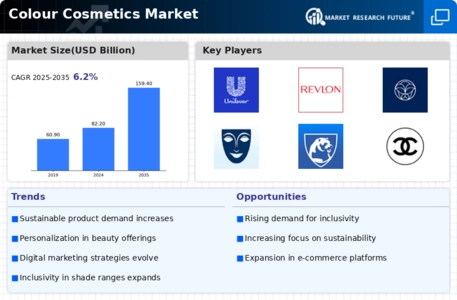
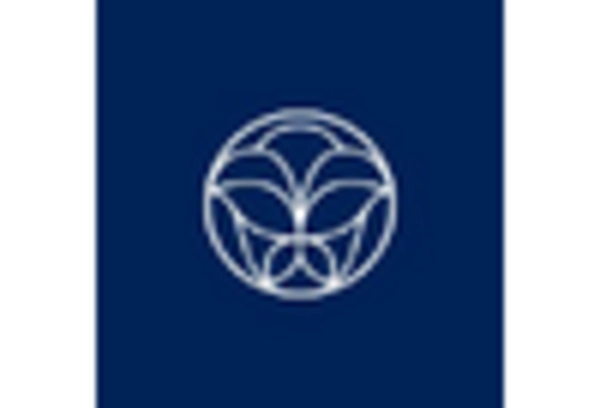
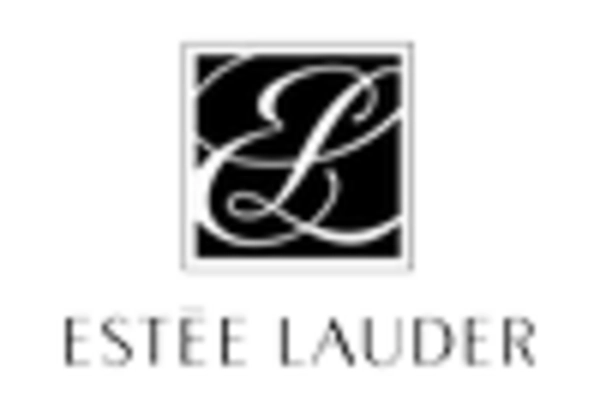
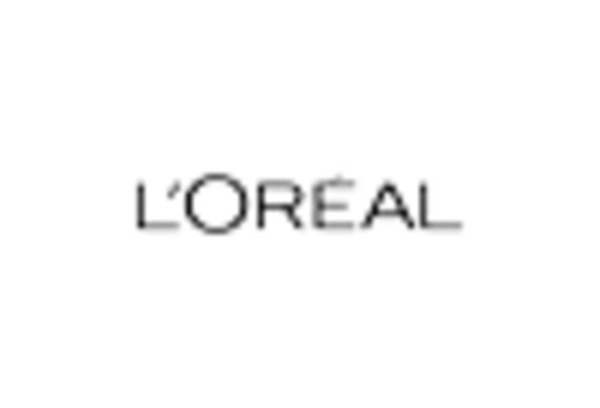
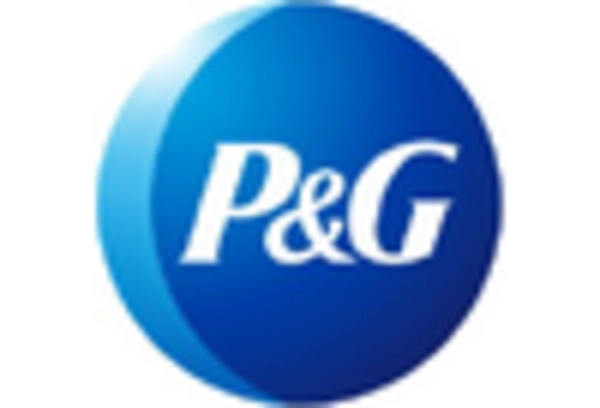
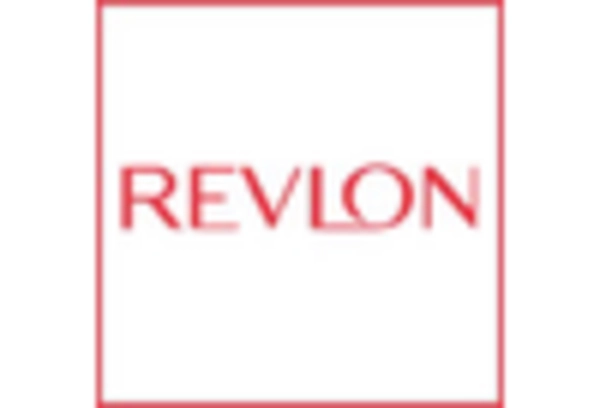
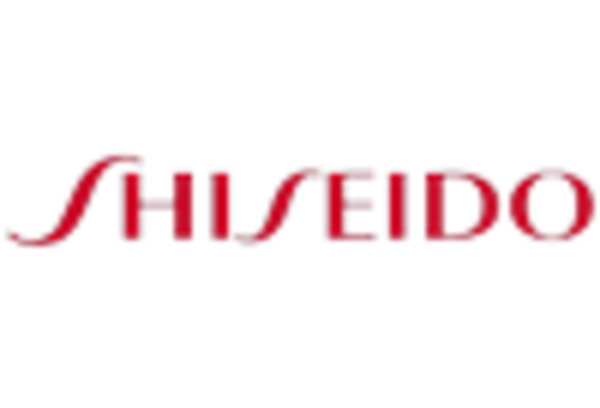

Leave a Comment